Read this blog to understand why Wildmoka, in collaboration with Altice France (BFM) has developed Auto ReZoneTM to deliver a mobile-first vertical viewing experience for news.
The paradox in News broadcasting
Claire was trying to watch the news. An interview with a controversial politician was being broadcast live and she wanted to view it on her mobile while standing on the bus.
However, with other passengers close and the bus swaying, she could barely see what was happening on the screen. Unsurprisingly, Claire closed the video in frustration – dissatisfied that she couldn’t follow the debate.
Claire’s experience happens millions of times every day around the world. Some 2.3 billion people watch video on their mobiles, spending more time on smartphones than watching TV. And, most of these people hold their smartphones vertically when consuming video content:
- Due to the shape of our hands, we hold our phones vertically 94% of the time
- 75% of millennial's watch video vertically on their phones
- Disruptive and popular media platforms like TikTok, SnapChat and Instagram encourage or even mandate vertical video format
Despite that, and this is a paradox, almost all news-related content is still today filmed and arranged horizontally to primarily satisfy the requirements of linear TV. When this content appears on the audience’s smartphone, viewers who don’t turn their phone see a compressed version of the frame with either large black spaces above and below or some additional graphics underneath. This is made even harder to consume because modern TV newscast layouts include multiple zones and graphics, so individual zones/sections of the original image often appear too small on mobile.
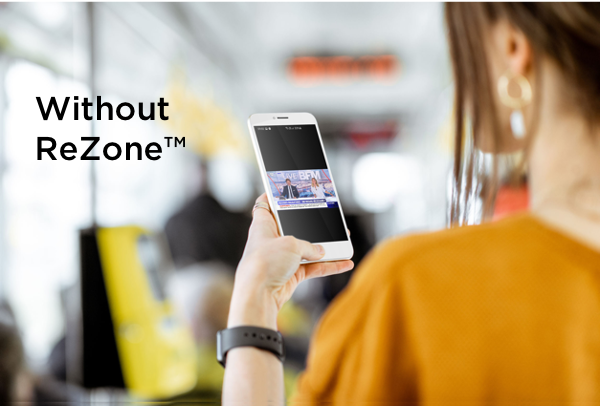
The challenge of delivering a true mobile-first, vertical experience
With more people watching content while holding their devices vertically, it is logical for broadcasters to make that content available in a vertical format, including for live shows. However, this is easier said than done.
Nowadays, live stream editors elaborate their news programs with a wide variety of video sources (studio or outdoor footage, live and recorded videos) with multiple graphical elements mixed together in a single stream. They create a multitude of possible scenes based on different layouts and change between them in real-time through transitions to illustrate the story they want to convey.
A scene may have various degrees of complexity and include:
- Shots of the anchor(s)/presenter,
- Shots of additional interviewees, experts in the studio,
- People being remotely live interviewed,
- Videos from archives,
- Graphics such as lower thirds, logos, clocks or dynamic overlays,
- Live audio, as well as scene-setting music,
- An intro and outro transitions and so on.
Bringing all these visual elements together into one comprehensive scene to tell a story as it happens live is a highly complex task that requires several editors operating the live mixing together.
At present, it is already expensive to create this content on a single horizontal TV layout – most broadcasters therefore opt to keep the frame horizontal when transmitting to mobile even if it not suited for this vertical screen. Users can of course turn their smartphones horizontally to view the content more clearly, yet this does not match how most consumers watch mobile content in the real world as previously mentioned.
Wildmoka introducing the 3rd Generation of image 'verticalization'
Before the launch of Wildmoka Auto ReZoneTM, there was no way for broadcasters to carry out simultaneous live video mixing for both horizontal and vertical layouts.
Wildmoka ReZoneTM is a patent-pending solution that represents the third generation of automatic frame verticalization. Until now, the solutions for ‘going vertical’ were tools like Adobe Auto Reframe (Sept 2019) or Google Autoflip (Feb 2020) (represented below as second generation) which automatically crop & extract a 9:16 vertical section out of an original 16:9 horizontal frame.
These solutions select a single zone of interest from the horizontal 16:9 frames and adjust it automatically to the left or to the right depending on the desired focus. For instance, in an interview scenario, the second-generation solution detects who is currently speaking and selects this part of the image to display vertically. However, this misses the reaction (body language) of other presenters, correspondents, experts, and interviewees, not to mention other zones of interest.
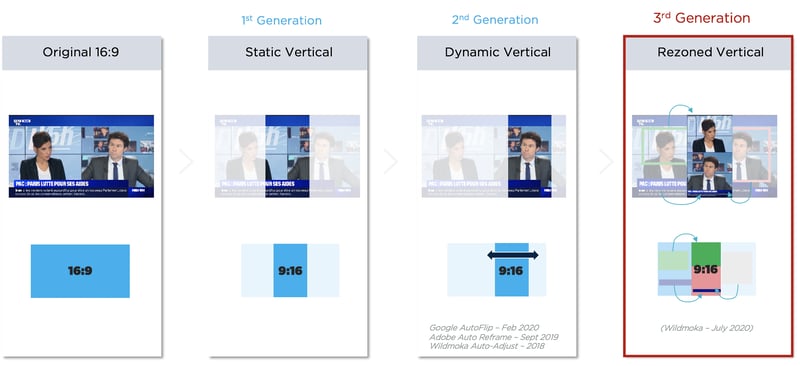
These second-generation solutions have many limitations:
- They usually do not support live streams (mostly recorded files)
They can transform a recorded video from horizontal to vertical but are not suitable for live streams that need to be created on-the-fly and published in seconds in order to minimize the delay between the 16:9 live stream and the 9:16 or 1:1 one.
- They lose by nature information contained in the original frames
If a journalist is talking about a ship that is currently sinking, the second-generation verticalization solution will usually zoom onto the speaker, yet miss the most dramatic element of the story (i.e. the footage of the ship sinking).
As a second example, if you are broadcasting a commentated video of goals (with picture-in-picture or split screens), but mobile viewers can only see the commentator talking, you are effectively paying for premium content (related to expensive rights) that is not being seen.
- It can easily become confusing and tiring to watch
If a panel of interviewees is being grilled by a journalist, the vertical images made with the second-generation of verticalization would keep switching between individuals as they speak. This can quickly become tiring.
- It can reduce the clarity of information
If a weather presenter is describing the forecast across the country, a simple vertical cropping focused on the presenter would make the weather bulletin difficult to follow.
The Wildmoka’s ReZoneTM solution helps broadcasters bypass these limitations.
The Solution: Wildmoka’s Auto ReZoneTM - Dynamic and real-time rezoning
The Wildmoka’s Auto ReZoneTM extracts content from live streams or recorded videos, and automatically reconstitutes it into a mobile-first video format (typically 9:16 or 1:1). The tool uses AI and machine learning to:
- Detect all the zones of interest in each 16:9 frames,
- Select a vertical layout/template suitable to fit the various zones of interest detected above,
- Extract each zone from the horizontal frame and adjust them individually to fit the zone sizes of the target vertical layout,
- Finally, re-compose the extracted zones and graphical elements into the overall final vertical frame.
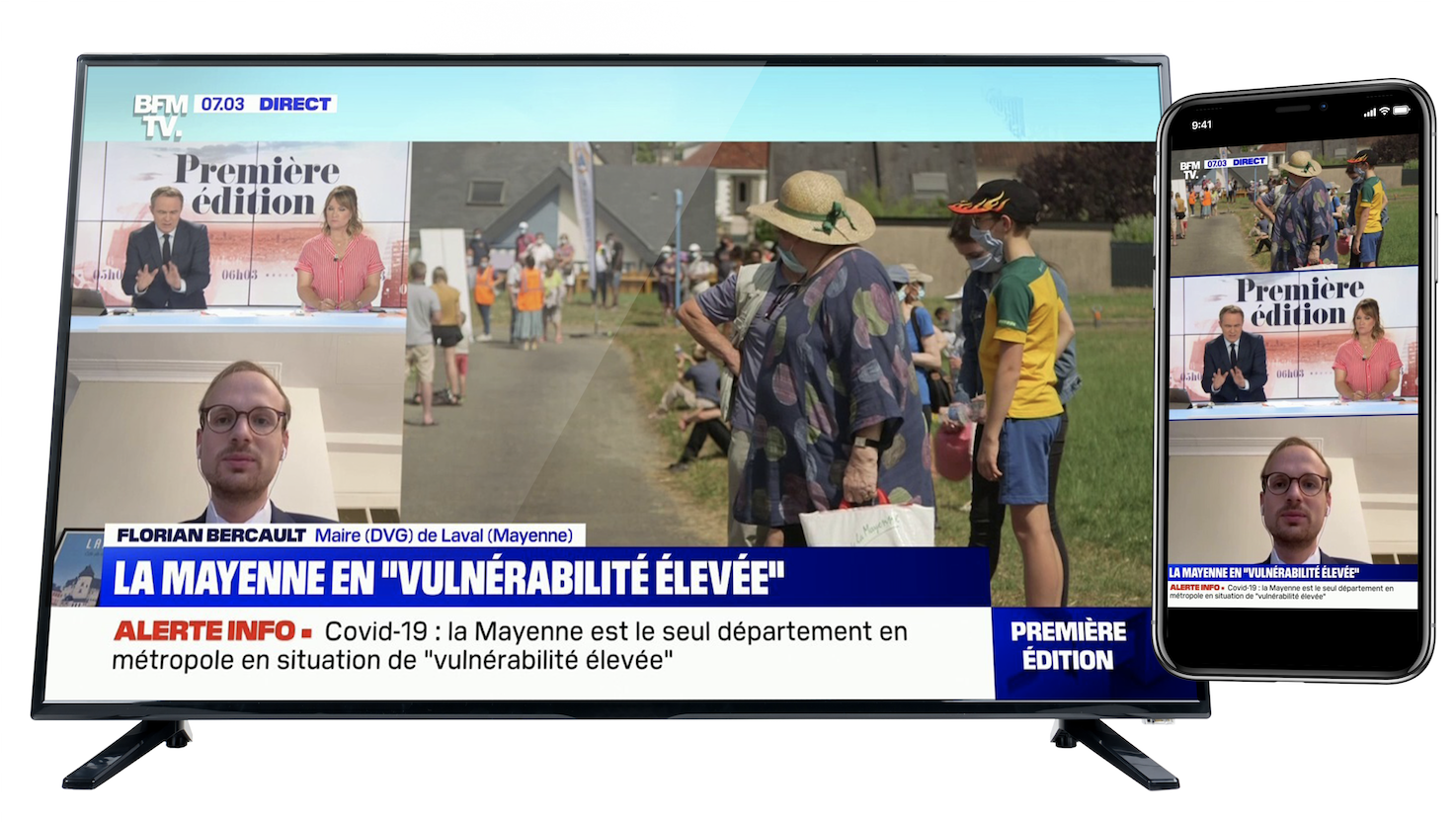
This process is done automatically and in just a few seconds in order to minimize the delay between the original live stream and the newly generated vertical stream. This solution has been especially designed for 24/7 news live streams.
Business benefits of for news broadcasters
Wildmoka’s Auto ReZoneTM represents a unique opportunity for news broadcasters to differentiate themselves from their competitors. With viewers being ever more connected and reachable for receiving and consuming content, delivering news directly on mobile is crucial. And, as we have seen, mobile means vertical format first.
Any news broadcaster needs to broadcast to mobile, yet those that will remain with a linear TV experience pushed to mobile will quickly look dated.
The benefits of ReZoneTM are multiple as described below:
Improved User Experience
By making all content (re-)organized to a mobile-first format, your audience instantly benefits from a new and more appealing experience.
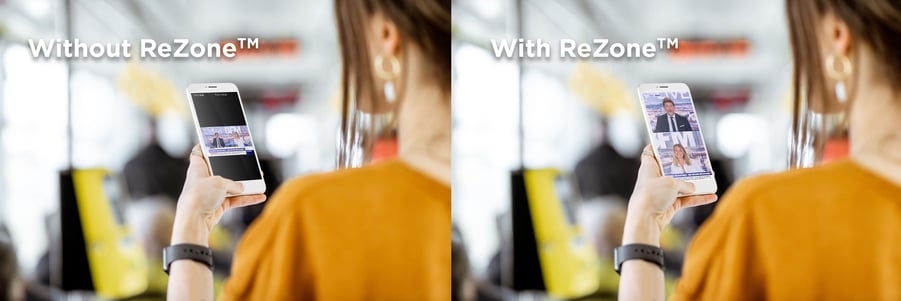
- Greater visual experience = increased user satisfaction
Videos are significantly easier to consume. Titles or scrolling headlines in the lower third of the frame are now easy to read, weather forecast maps fill the entire screen and presenters are all visible. It is finally possible to see the temperatures on the screen without having to turn the phone. Such evolution is especially appreciated by the senior market segment.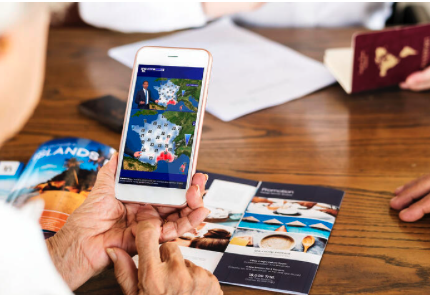
- Comprehensive and clearer content delivery
Wildmoka ReZoneTM keeps all important information and images contained in the horizontal format when delivering them in a vertical format. This means that no information is lost anymore, and viewers can understand the full story. Studio and outdoor footage as well as multiple interviewees are seen simultaneously, enriching your storytelling while maintaining the editorial effort invested only on creating the horizontal 16:9 frames.
- Consistency across TV and mobile
Ensuring that stories are represented in a consistent way, whatever device people use, means that your brand appears more coherent. It also shows how you, as a broadcaster, care about the quality of the content you distribute, whatever channel it is being published on. This helps to win the trust of the viewer who will recognize you as a more premium news provider.
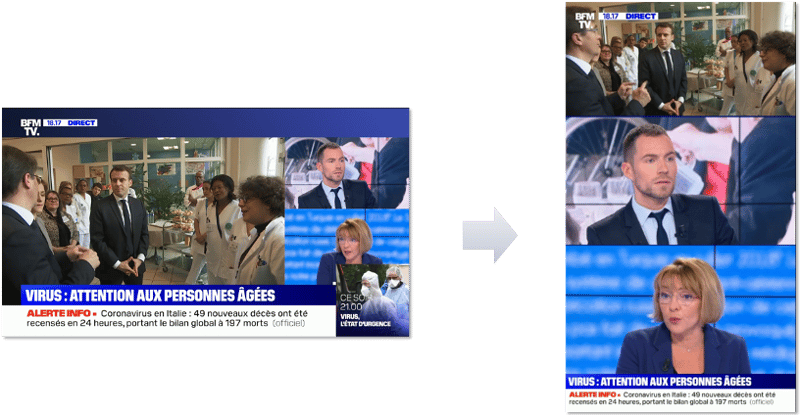
- Alignment with Social Media best practices
As demonstrated by the breaking news during the fire at the Paris Notre-Dame cathedral, people are heavily consuming and exchanging news on social media. Social media is therefore the go-to place for important and time sensitive news and it is crucial to offer a vertical or square format in order to gain traction on these channels.
Enhanced brand image
At present, most news broadcasters distribute content exclusively in a horizontal manner. Therefore, organisations that use Wildmoka’s Auto ReZoneTM stand to benefit:
- Brand differentiation
Broadcasters who innovate with solutions like Auto ReZoneTM are immediately differentiated from peers. Content is easier to consume and audiences associate that broadcaster with a better UX. Your organisation is seen as an innovator, as a modern and ‘cool’ company.
- Audience recognition
With a viewing experience quality equivalent on mobile as it is on linear TV, consumers will prefer content from your brand. It will also help with acquiring younger market segments such as millennial's and Gen Z that consume most of their content over mobile.
- Industry recognition
Being the first to innovate sets you apart from peers and you win recognition for being innovative which is always valuable when creating business partnerships in the news broadcasting ecosystem and to seduce investors.
Increased revenue growth opportunities
By introducing ReZoneTM, broadcasters can enhance their revenue opportunities:
- Increased audience
If your content is easier to consume, more people are likely to watch it on your channels, rather than with your competitors. This can also lower your Subscriber Acquisition Cost since vertical mobile content is easily visible and understandable for potential new viewers. The vertical format being social media friendly, your news are likely to be more spread across people’s communities.
- Longer average watching time
Because the content is more comfortable to watch while on the go (while commuting to work for example), people are likely to stay longer watching your programs. This means more opportunities for advertisers.
- Audience stickiness
News often suffers from the fact that it is difficult to create user stickiness since much of the raw content is common to other broadcasters. With Auto ReZoneTM, that won’t be the case since the way the content is presented on mobile is so different and superior that people will prefer to stay on the broadcaster that uses it.
- Greater interest from advertisers
With higher audience numbers, stickier audiences and longer viewing times, advertisers will naturally want to spend with you. As an advertising brand, you obviously want to be seen at the ‘place to be’ and be associated with innovative/popular distribution channels.
Get Ready: Seamless integration
One major advantage of Auto ReZoneTM is that it does not require any major change to your existing on-premises workflow or any upgrade of your existing on-premises linear TV production servers:
- No disruption to your existing workflow
ReZoneTM is a cloud-based solution. You only need to send your RTMP (or HLS or SRT) stream to Wildmoka in the cloud and you will get your associated output stream reorganized in vertical mode within seconds.
- No additional editorial resources needed
With Auto ReZoneTM, you do not need to hire additional editorial staff to reformat content for mobile. Your editors don’t have time to edit content again so it looks good in a vertical frame. Auto ReZoneTM does the hard work for them automatically and within seconds.
Embrace the mobile-first vertical format trend before your competitors. Contact us now!
The trend for viewing news on handheld smartphones held in a vertical position is here to stay. By adopting Wildmoka Auto ReZoneTM, broadcasters can respond to this changing media consumption habit, gain audiences, boost revenue and enhance their reputation.
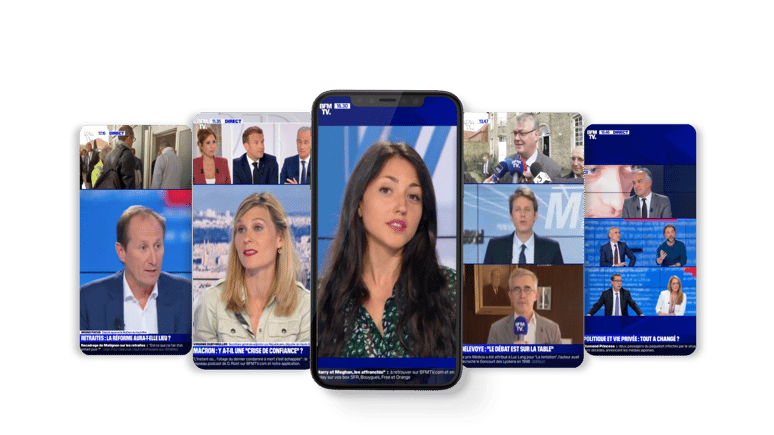
To learn more about Auto ReZoneTM, contact Wildmoka today.